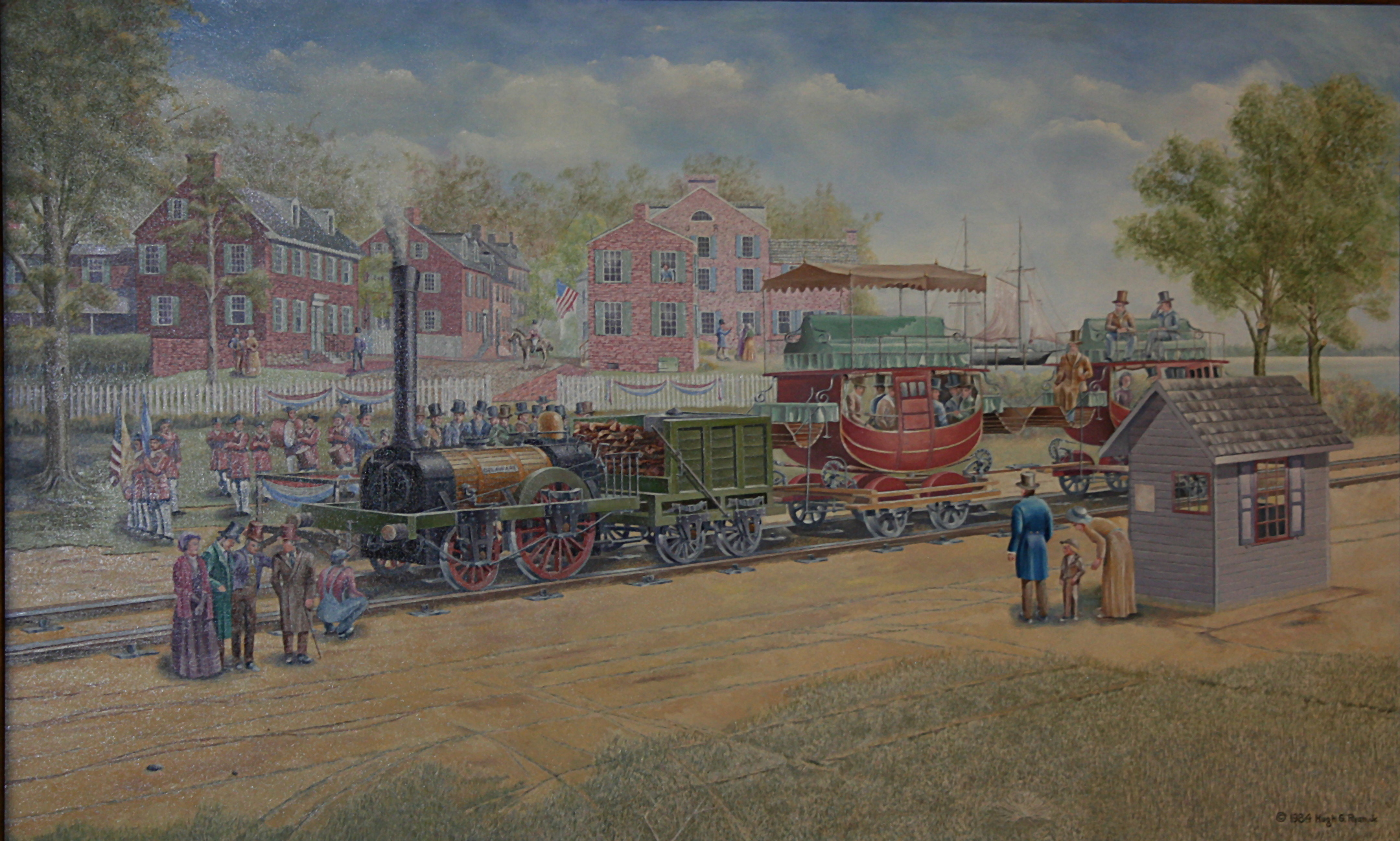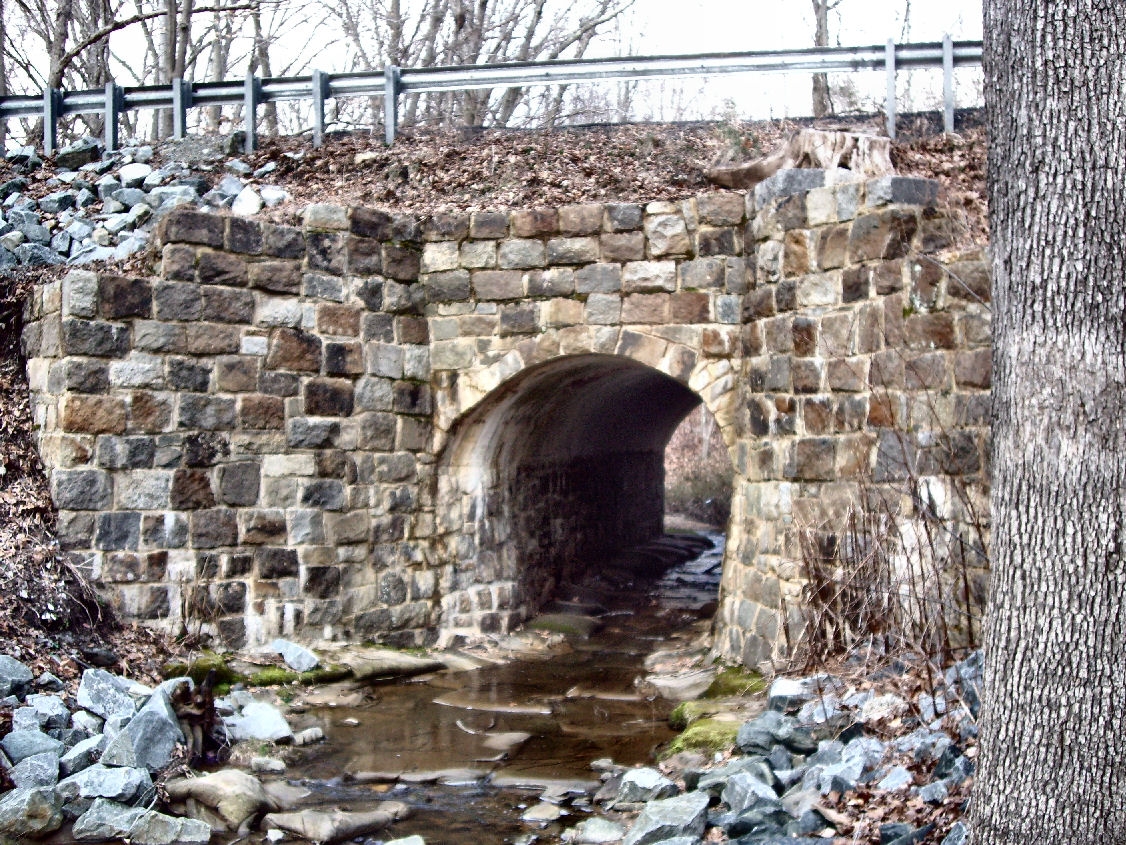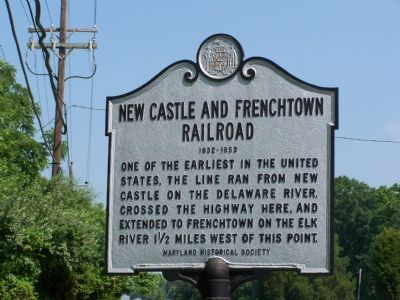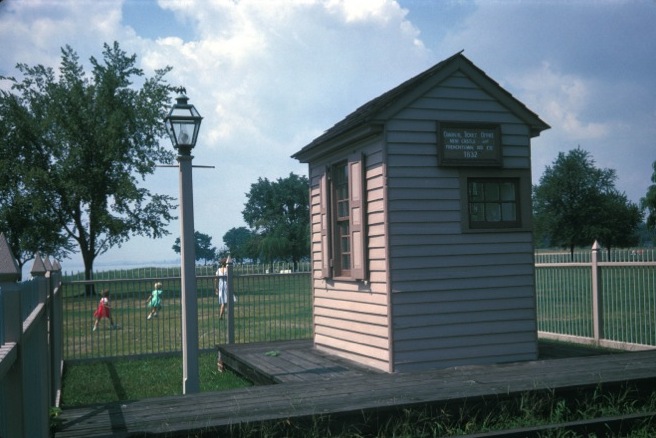The Newcastle & Frenchtown Railroad
The New Castle and Frenchtown Turnpike and Railroad Company (NC&F) was a pioneer in the history of American railroads. It was opened in 1831, making it the first railroad in Delaware and one of the first in the US. It ran for about 16 miles from New Castle, Delaware, on the Delaware River, to Old Frenchtown Wharf, Maryland, on the Chesapeake Bay.
It was intended to provide a faster and cheaper alternative to the Chesapeake & Delaware Canal, which opened in 1829 and connected the same two bodies of water. However, the NC&F faced competition from other railroads and canals in the region, and eventually became obsolete and abandoned. (Right of Way)
Some sources, myself included at times, have labeled this as the first railroad abandonment in the United States, being abandoned in 1859. However, it is not even the first right of way to be abandoned in the State of Delaware, as that distinction belongs to the Dulaney Railroad. One could argue that this was the first common carrier abandonment, but I'm not certain that even that is true.
 |
New Castle & Frenchtown Steam Railroad - Opening Day - September 10, 1832 by Hugh Ryan Jr. (NC Chap) |
The idea of building a railroad between New Castle and Frenchtown dates back to the early 1800s, when the Chesapeake & Delaware Canal was being planned and constructed. The canal was seen as a threat by the merchants and businessmen of New Castle, who feared losing their trade and commerce to the canal. They proposed a railroad that would connect their city to the Chesapeake Bay, and thus to the markets of Baltimore and beyond.
 |
Map of New Castle and Frenchtown Railroad, built 1830-1832. The NC&F was acquired by the Philadelphia, Wilmington and Baltimore Railroad in 1839. Map cropped from larger engineering drawing sheet. Library of Congress, Wikipedia Commons)
The New-Castle and Frenchtown Turnpike Company was chartered in Delaware in 1809, and in Maryland in 1810. It built a turnpike road from New Castle to Old Frenchtown Wharf, which opened in 1815 and 1816. The road was partly built on an existing turnpike, the New Castle Turnpike, which was chartered in 1811 and ran for about 3 miles east of New Castle. The turnpike was a toll road that charged 12.5 cents per horse and carriage, and 6.25 cents per horse and rider.
In 1828, the Maryland General Assembly authorized the company to replace the turnpike with a railroad and change its name to the New-Castle and French Town Turnpike and Rail Road Company. Similar laws did the same for the two companies in Delaware, renaming the New Castle Turnpike Company to the New Castle Turnpike and Railroad Company. The companies merged in 1830, forming the New Castle and Frenchtown Turnpike and Rail Road Company, with no dash in New Castle.
The construction of the railroad began in 1830, and was completed in 1831. The chief engineer for the project was John Randel Jr., who had previously surveyed the route of the Erie Canal in New York.
The railroad followed the same alignment as the turnpike, except for a few minor deviations.
 |
New Castle and Frenchtown Railroad Arch. View of the arch from south of W. Lewis Shore Road. John Miller photograph, 2012 via HMDB. (I am unsure if this was for the railroad, the canal or for both) |
The line used both horses and steam locomotives to pull the trains, like many lines at the time. The first locomotive, named Delaware, was imported from England in 1831, and was one of the first steam locomotives in the US. It was a 4-2-0 type, with a single pair of driving wheels and a pair of leading wheels. It weighed about 4.5 tons, and could haul about 15 tons at a speed of 15 miles per hour. The locomotive was initially unreliable and prone to breakdowns, and took four years to be fully operational. The railroad also acquired two more locomotives, named Maryland and New Castle, in 1833 and 1834, respectively. (Pencader Heritage)
The below image is the only one that I can find of what the steam engine and cars looked like.
 |
| Advertisement for the New Castle & Frenchtown Railroad. (New Castle Historical Society.) |
The railroad operated both passenger and freight trains, carrying people, mail, and goods between New Castle and Frenchtown. The passengers could then transfer to steamboats that plied the Delaware River and the Chesapeake Bay, connecting to Philadelphia, Baltimore, and other cities. The fare for a one-way trip on the railroad was 75 cents, and the travel time was about an hour. The railroad also offered a stagecoach service between New Castle and Wilmington, Delaware, for an additional 50 cents.
The NC&F was a successful and profitable enterprise in its early years, attracting many travelers and shippers who preferred it over the canal. It carried about 40,000 passengers and 20,000 tons of freight per year in the 1830s. It also paid dividends to its shareholders, ranging from 6 to 10 percent per year.
Nonetheless, the NC&F’s fortunes began to decline in the 1840s, as it faced increasing competition from other railroads and canals in the region. The most serious rival was the Philadelphia, Wilmington and Baltimore Railroad (PW&B), which was chartered in 1831 and completed in 1838. The PW&B ran parallel to the NC&F for most of its route, but was longer, cheaper, and faster. It also connected directly to Philadelphia and Baltimore, eliminating the need for steamboat transfers. The PW&B soon captured most of the traffic between the two cities, and reduced the NC&F to a local feeder line.
In 1845, the NC&F was sold to the PW&B, which operated it as a subsidiary. The PW&B continued to run trains on the NC&F, but mainly for local traffic. The PW&B also built a new line from Wilmington to Porter, Delaware, in 1859, which bypassed the NC&F’s eastern section. The PW&B then abandoned the NC&F’s section from Porter to Frenchtown, leaving only the section from Porter to New Castle in operation.
The NC&F’s remaining section became part of the Pennsylvania Railroad (PRR) in 1881, when the PRR leased the PW&B. The PRR used the NC&F’s section as a branch line to serve the industries and communities along the Delaware River.
The PRR also built a new connection from the NC&F’s section to its main line at Edgemoor, Delaware, in 1906, creating a shortcut for trains to and from the Delmarva Peninsula.
 |
| New Castle & Frenchtown Historical Marker. (Location) William Pfingsten via HMDB. |
This section of the road survived until the 1970s, when it was abandoned by Conrail, the ultimate successor of the PRR. The section was then acquired by the State of Delaware, which converted it into a hiking and biking trail, known as the Jack A. Markell Trail, a 7.9-mile trail that follows the PRR section from New Castle to Wilmington, offering views of the Delaware River and the historic sites along the way. The trail opened in 2018, and is part of the East Coast Greenway, a network of trails that stretches from Maine to Florida.
The New Castle and Frenchtown Railroad Right-of-Way, a National Register of Historic Places listing that covers the abandoned section of the NC&F from Porter to Frenchtown. |
The NC&F was one of the earliest railroads in the US, and played an important role in the development of transportation and commerce in the region. It was also a pioneer in the use of steam locomotives, and helped to establish the standard gauge in the US. The NC&F’s route is now a historic and recreational asset, offering a glimpse into the past and a scenic way to enjoy the present.
I hope you enjoyed this blog post, and I hope you will visit the NC&F’s route and experience its history and beauty for yourself. Thanks as always for reading!




Comments
Post a Comment